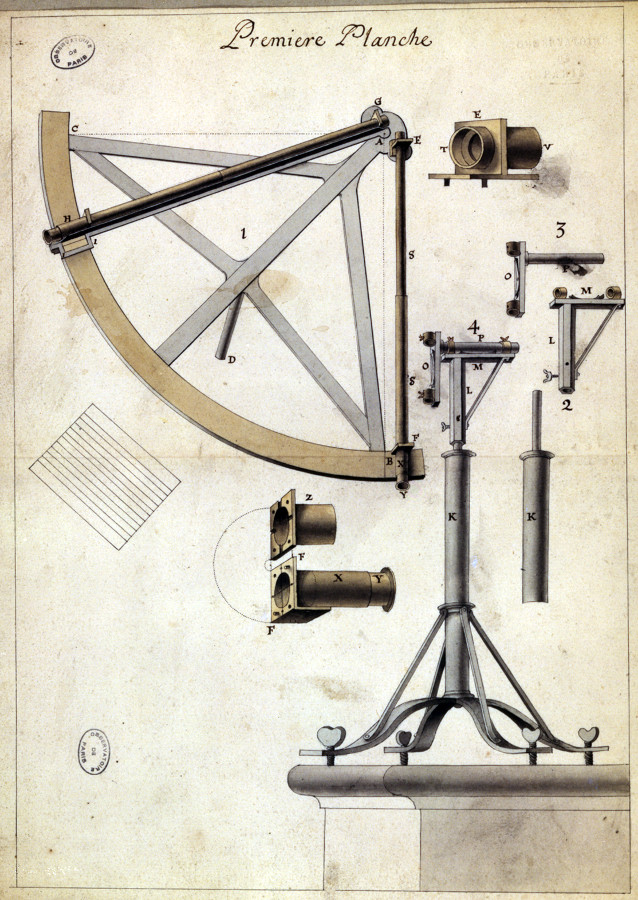1718
End of the first determination of the Paris meridian
At that time, measuring the Earth was one of the tasks assigned to astronomers, and one of them, Picard, perfected a method for measuring large distances on the Earth by triangulation. He began in 1669-1670 measuring the length of a part of the Paris meridian, but could not continue this work, which was taken up by Jean-Dominique Cassini, followed by his son and successor Jacques Cassini (1677-1756). In 1720, the latter published a work that describes in detail the measurements at Dunkirk and at Perpignan. The surprising result was that the earth seemed to be stretched like a rugby ball, and not flattened like a pumpkin. This led to new geodetic campaigns.
caption : Quadrant - copyright : Observatoire de Paris
To know more : Jean Picard
